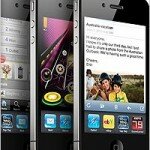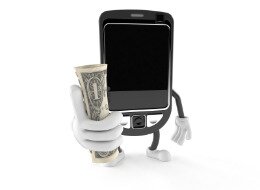By Erin (Mack) McKelvey
On Oct. 12, I spoke at the “Future of Marketing” event in Tyson’s Corner, VA. As the sole representative of mobile on the panel, I attempted to focus most of my remarks on the massive shift in consumer behavior we have seen over the course of the last two to three years.
From time of day to the places where consumers are engaging with mobile, it is an exciting time for advertisers to get creative with mobile.
Adds up
Many of our advertisers ask us if there is a peak time or more preferable time to serve their mobile ads. The answer is yes and no. It really does depend on their campaign goals.
Mobile consumers are engaging with their devices starting at 5 a.m. Eastern Time, which reflects British businesses ramping up at that hour and the Eastern U.S. seaboard slowly coming online.
The ramp continues steadily until the decline starts at midnight Eastern and steadily trails off until 5 a.m. Eastern time the following morning.
The peak traffic of the day on our network is around 8 p.m. ET, where most of the U.S. – Hawaii and Alaska, notwithstanding – is in their evening mode.
We have three categories of users during the week and we see various content consumption behavior.
Called “Mobile Mornings,” which we define as 5 a.m. to noon ET, we see above-average network spikes in content such as weather, traffic, news/local, health and fitness and productivity.
The “Mobile Workday” spans from 9 a.m. to 7 p.m. ET, when network traffic continues to ramp as other U.S. time zones come online.
During this time period, we see a shift and spikes in content drivers, particularly around travel and lifestyle, shopping and retail, business and finance, ebooks and reference, music, portals and general content.
We enter the “Mobile Primetime” From 5 p.m. to midnight, where mobile users switch to social interaction and entertainment-focused content.
Why is mobile engagement constant throughout the day?
Slice of life
There is now a great amount of data in the market that shows that 60 percent of mobile usage – using phones and connected devices such as tablets or e-readers – happens when consumers are on-the-move, yet 40 percent of the daily usage is actually coming from inside the home.
That data point specifically points to research shared with us by InsightExpress several months ago.
These critical pieces of data are not surprising to me. I watched the faces in the room during the panel when I spoke about some of this data. Perhaps it is easier to pull in some real-life examples.
I think about the devices that exist in and out of my home and my own family’s mobile engagement.
We do not own an alarm clock, radio or personal laptops. We use our mobile phones/connected devices as full replacements for these devices.
We have a PC at home, which my 14-year-old daughter lovingly calls, “The Dinosaur.” She uses the PC for typing her school papers.
We have a landline, yet I could not tell you our number if you paid me. In fact, I do not think we have checked the voicemail on that phone in six months. It is filled with telemarketer hang-ups.
My daughter’s main point of access to the outside world is not her phone, it is her iPod touch. She accesses the mobile Web, manages her music and applications, plays her games, and even texts through an app.
Indeed, she uses her mobile phone less and less – particularly because she does not call anyone (disclaimer: she calls me from time to time, but she never calls her friends – they are text only).
My husband and I have our tablet open on the coffee table throughout the football games on Sundays.
We are constantly looking up background on players, history of coaches, checking our fantasy and pick’em leagues.
Although the RedZone is the best television network during football, we even stray from football content and onto other areas pertinent to our lives during lulls in the games.
Not out there
When we are out as a family, our mobile devices help us decide our activities, where we will eat and what store we will go to. Much of this is driven either by suggestions (ads) and/or mobile commerce-type functionality such as buying available movie tickets via our phones, ordering delivery or making reservations.
We use our devices in-store not only to compare prices, but also to look up product information or take advantage of mobile-enabled displays or deals.
I saved 20 percent through an in-store text promotion. Yes, the advertiser will likely market to me again, but hey, I saved about $200 through the promotion, so market away.
We use our devices while we are at our daughter’s volleyball games or our nephews’ soccer games to decide what to make for dinner, look for store hours/maps for the next destination, or simply to browse the news and events, or check out favorite sites and blogs.
In the evenings – literally every night before the lights go out, we are on our mobile devices – closing out our days, planning the next, talking about our lives and using our mobile devices as instruments of information, organization, conversation and entertainment.
SO, EVEN MY own family’s behavior proves the data around time and place of mobile usage.
We definitely use our mobile devices while we are on the move, but we use it extensively at home as either standalone devices or to amplify other media we are consuming at that time.
There lies the marketing imperative. If your consumers are living their lives with a marketing touch point in front of them at every point of the funnel on a continual basis, what are you doing to engage with them or us?
Erin (Mack) McKelvey is senior vice president of marketing at Millennial Media, Baltimore, MD. Reach her at .













 To connect with the tech savvy shopper this season, Toys “R” Us launched it’s “R” mobile messaging service that sends the consumer instant deals and offers directly to their mobile device. The retailer also implemented bar code scanning devices at the checkouts to allow store associates to scan coupon codes directly from customer’s mobile devices.
To connect with the tech savvy shopper this season, Toys “R” Us launched it’s “R” mobile messaging service that sends the consumer instant deals and offers directly to their mobile device. The retailer also implemented bar code scanning devices at the checkouts to allow store associates to scan coupon codes directly from customer’s mobile devices. Best Buy is running ads within TheFind, an online and mobile application, giving consumers discounts to products for which they are searching for.
Best Buy is running ads within TheFind, an online and mobile application, giving consumers discounts to products for which they are searching for.

 Well… I’m not sure how much fun being patted down by the TSA might be, but the location-based mobile check-in service, Loopt, is trying to make a game out of the uncomfortable security checkpoint situation.
Well… I’m not sure how much fun being patted down by the TSA might be, but the location-based mobile check-in service, Loopt, is trying to make a game out of the uncomfortable security checkpoint situation.
Find us here too!